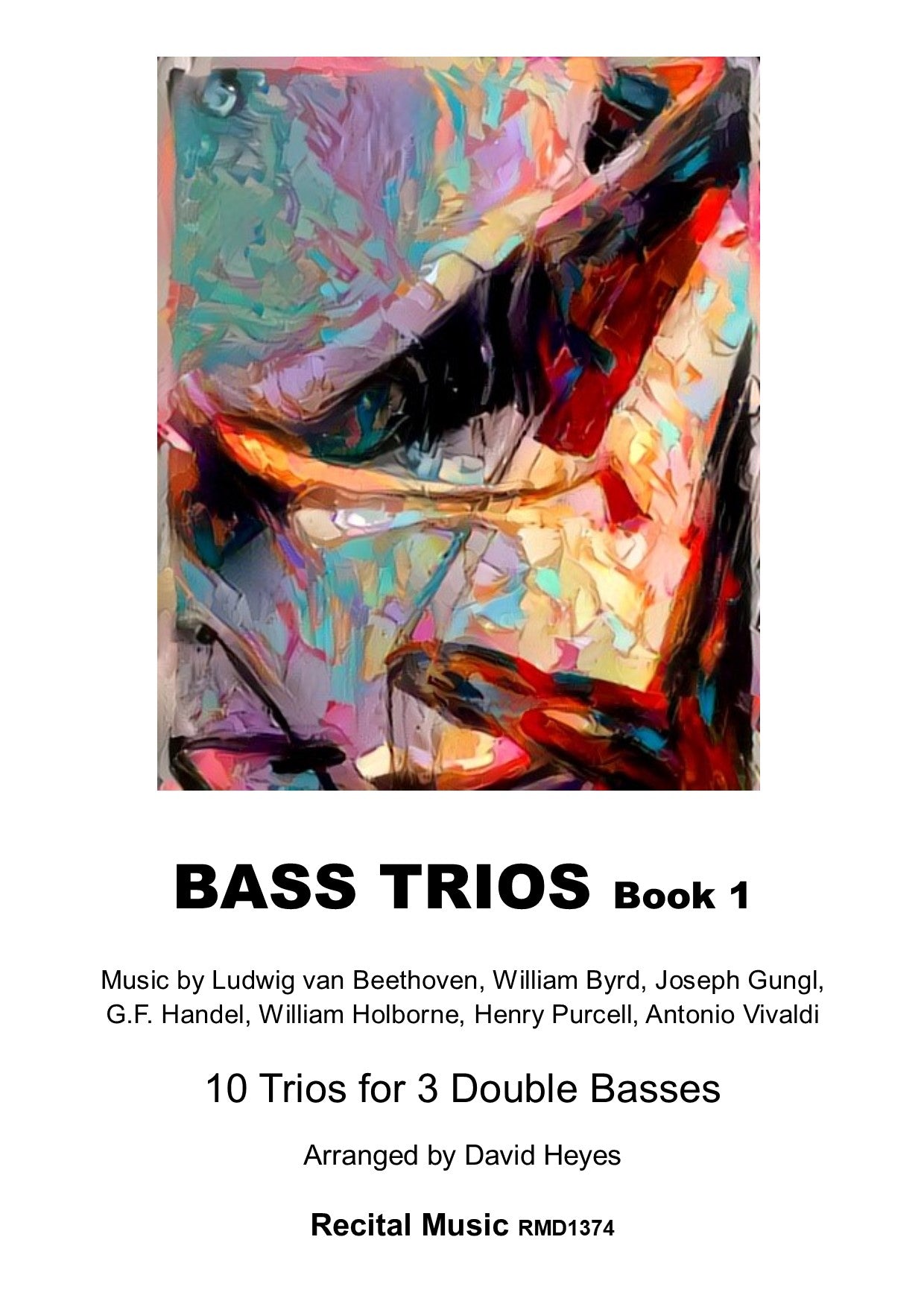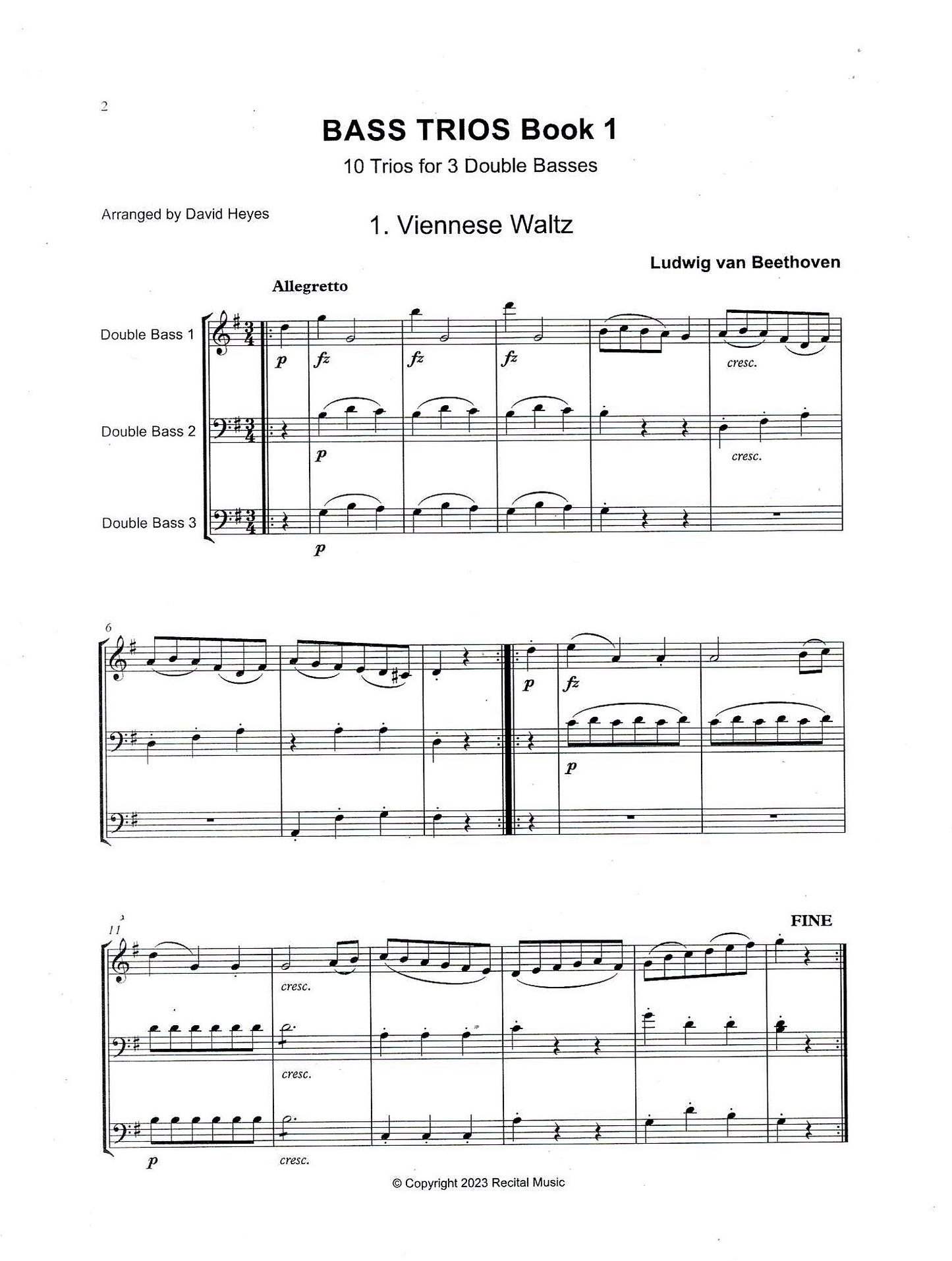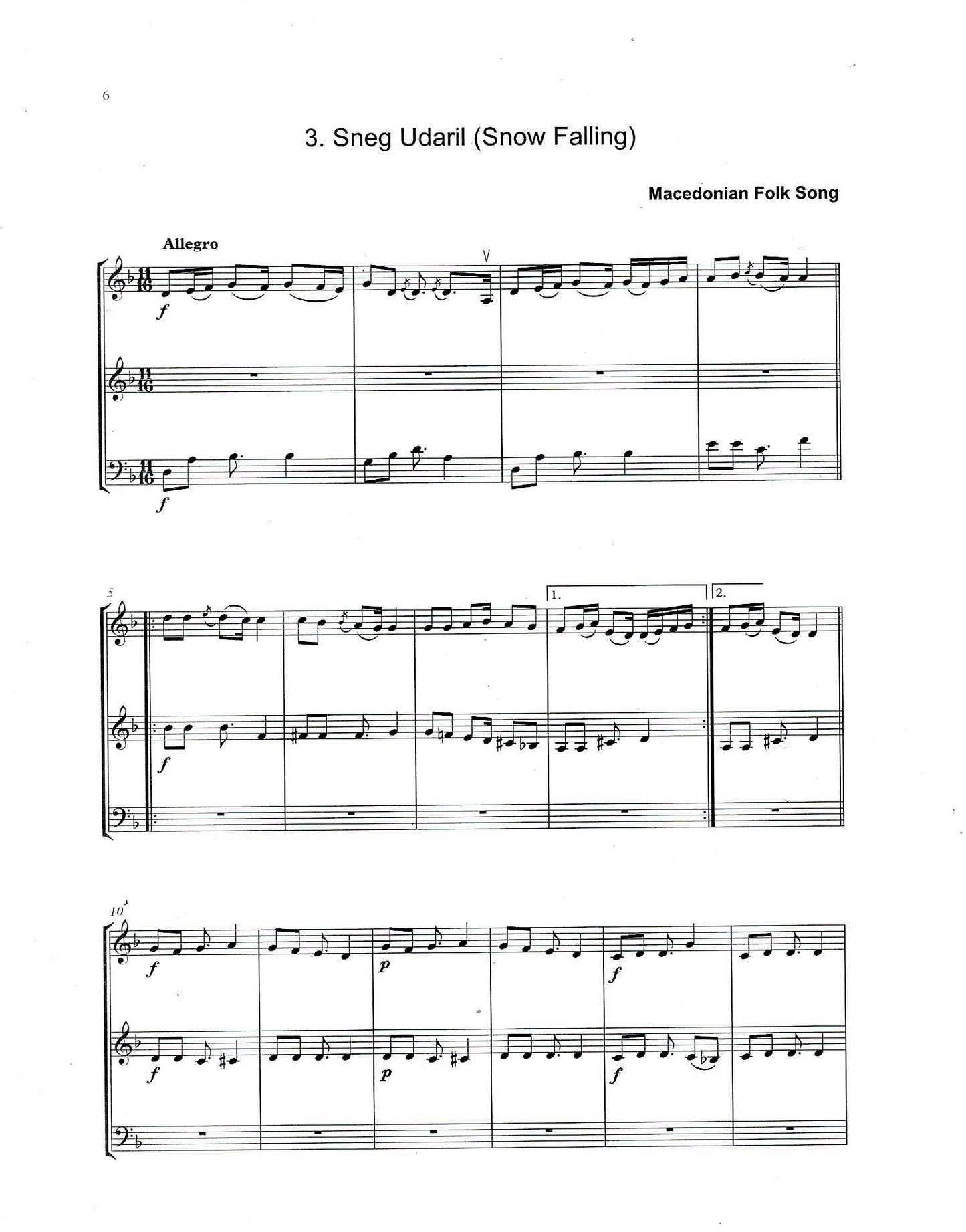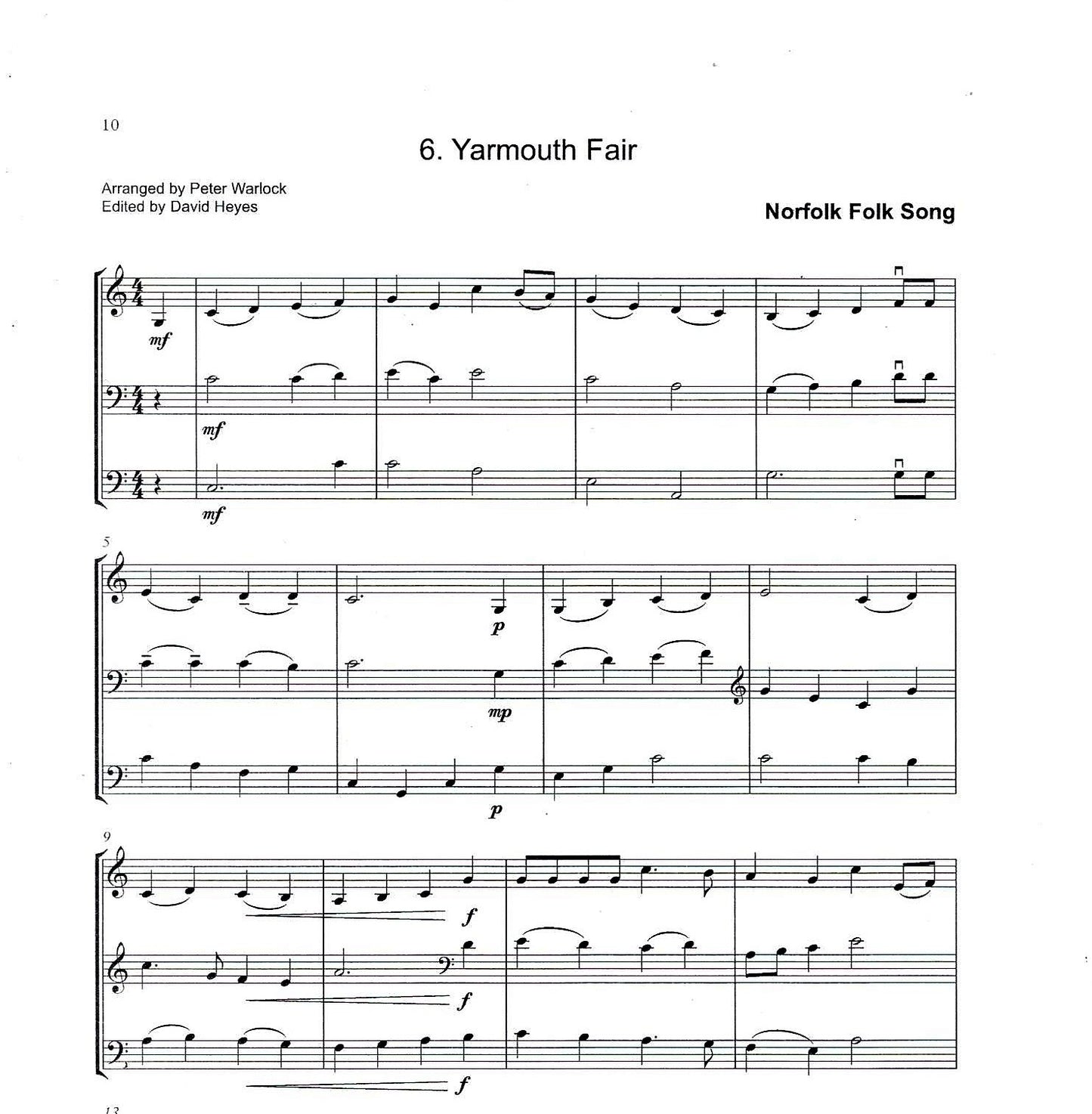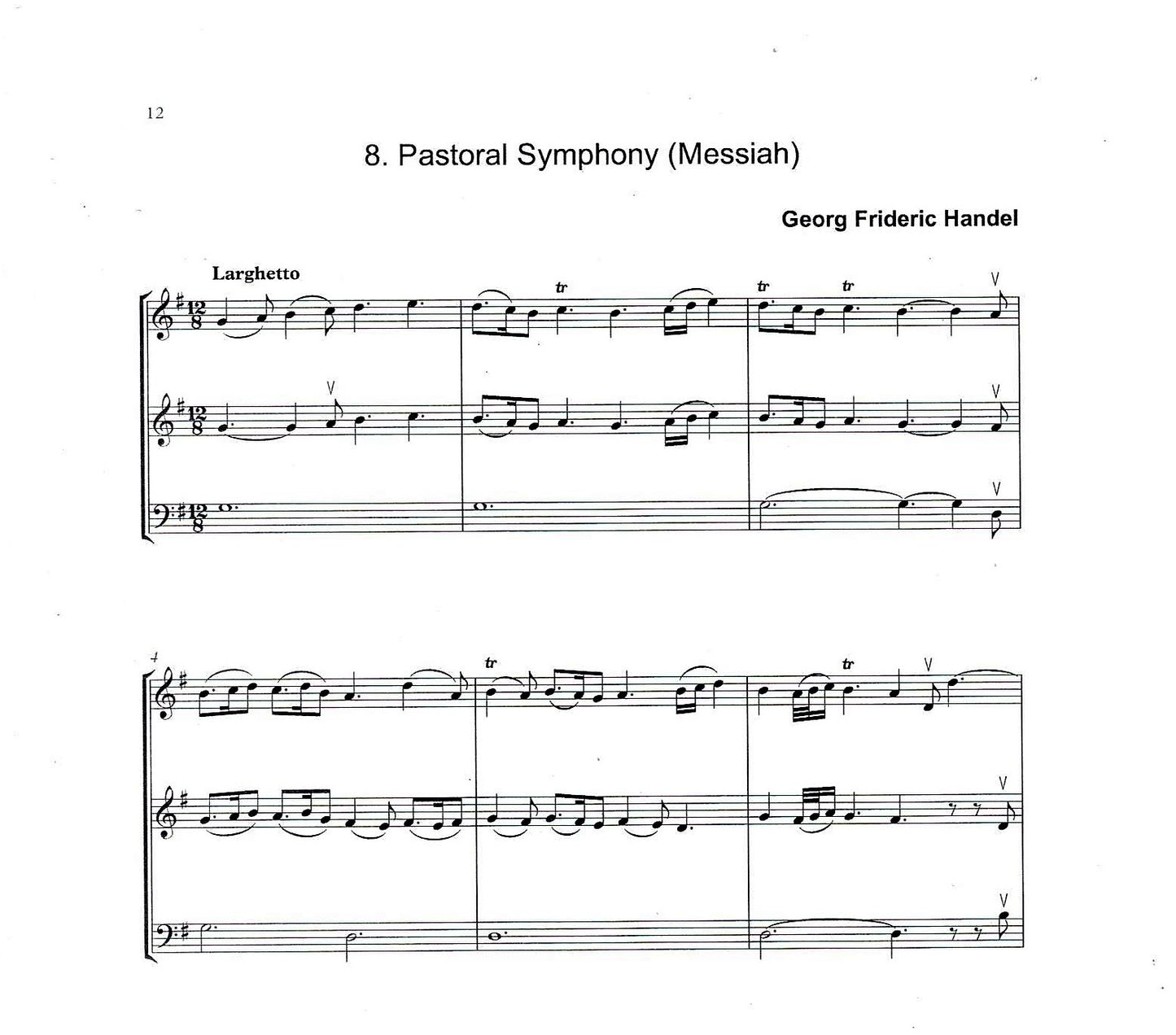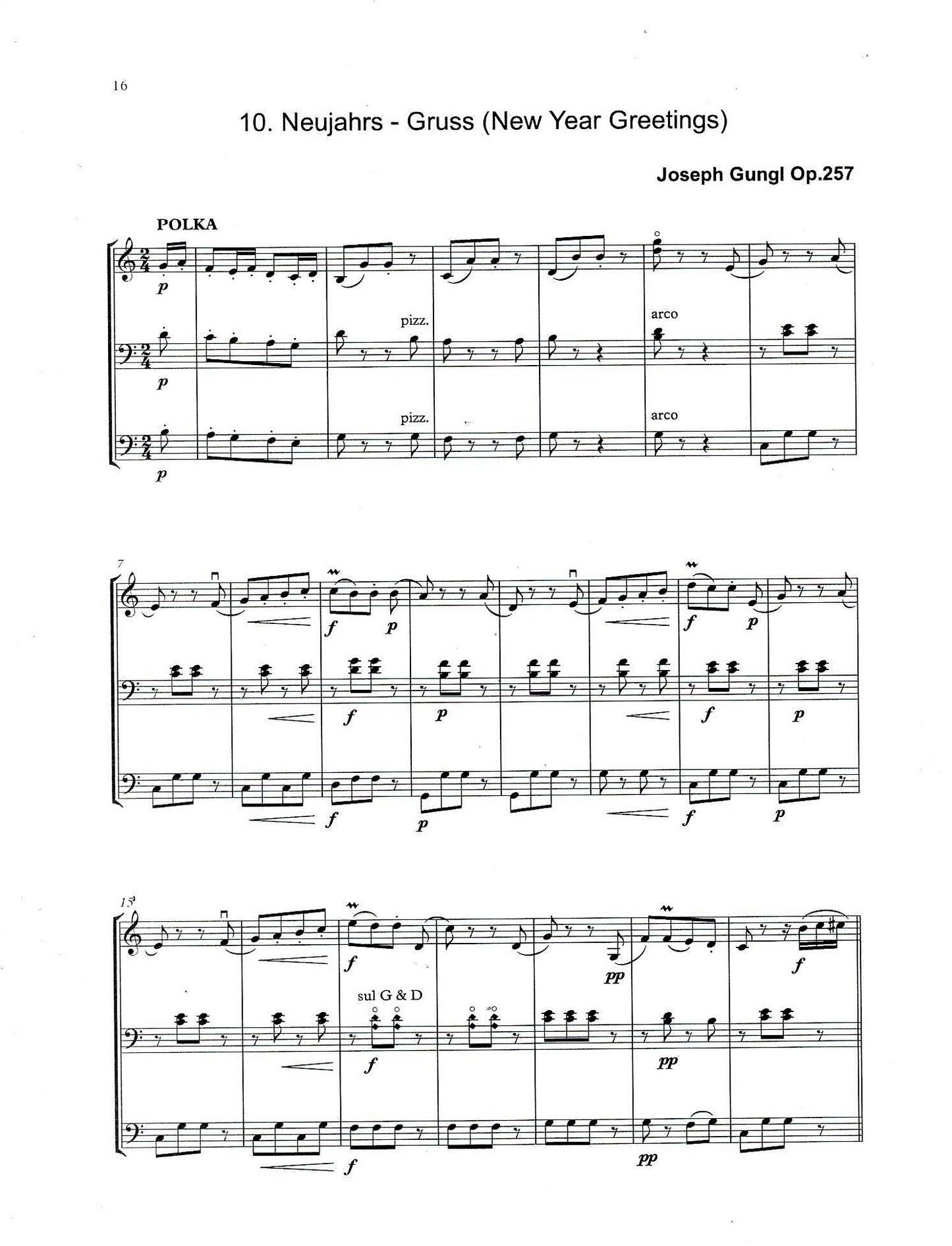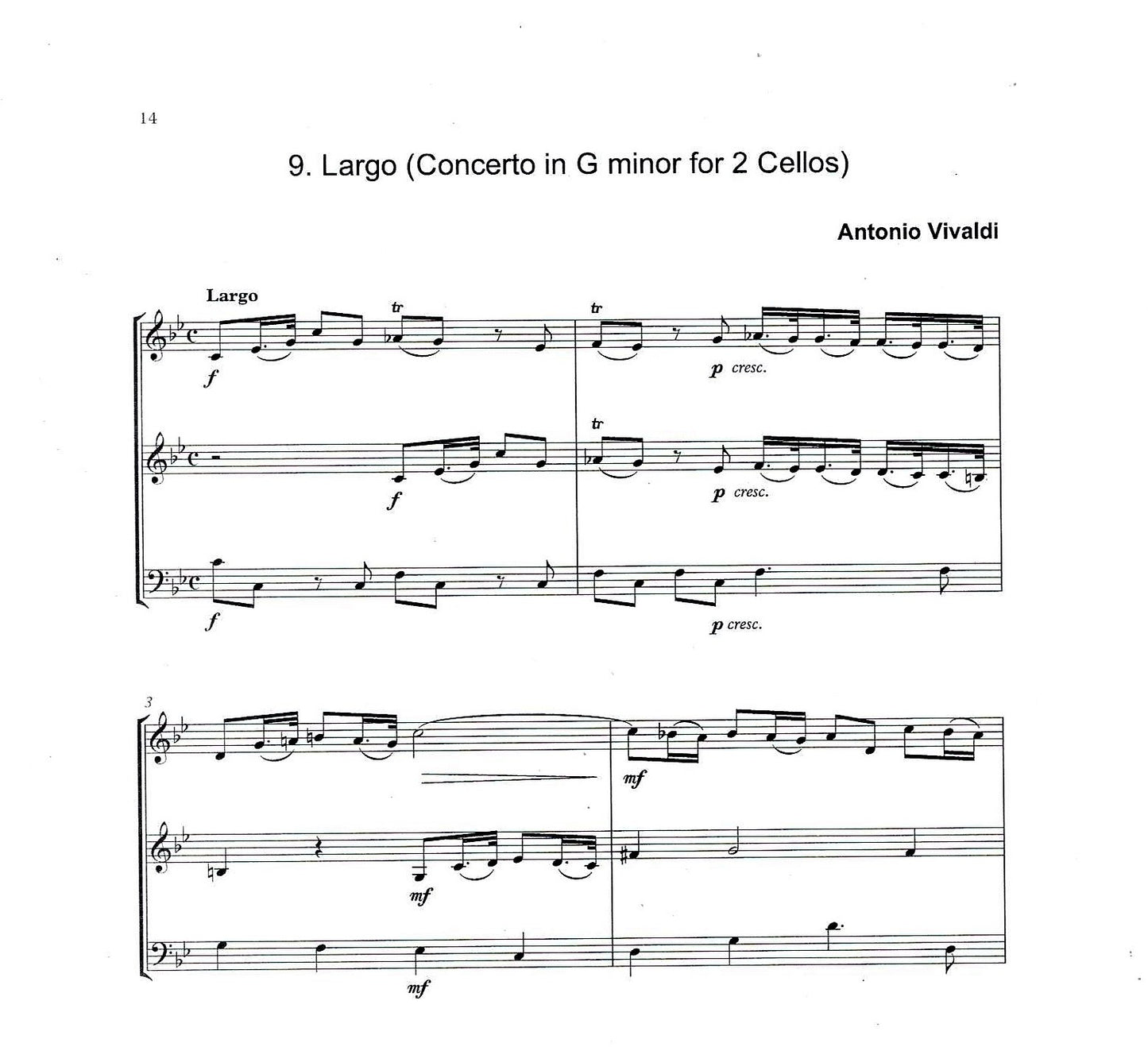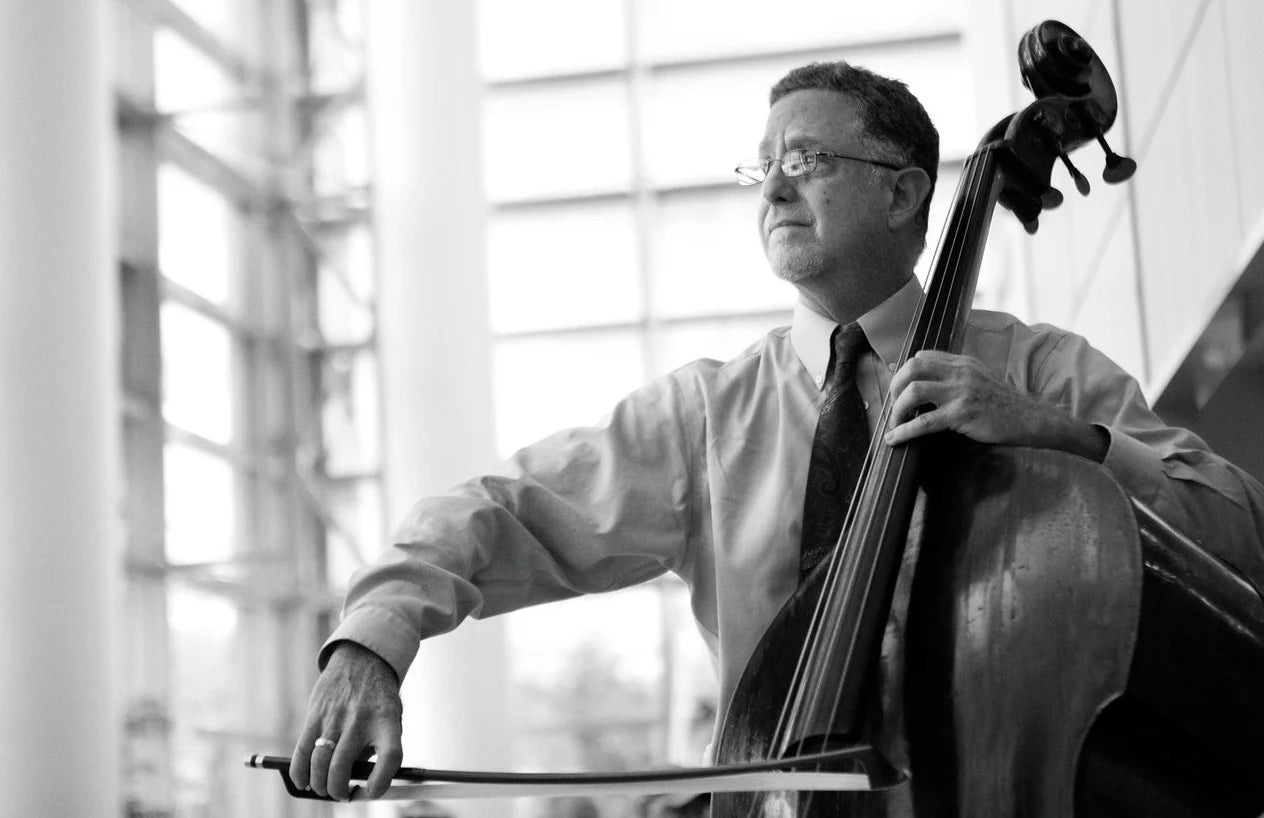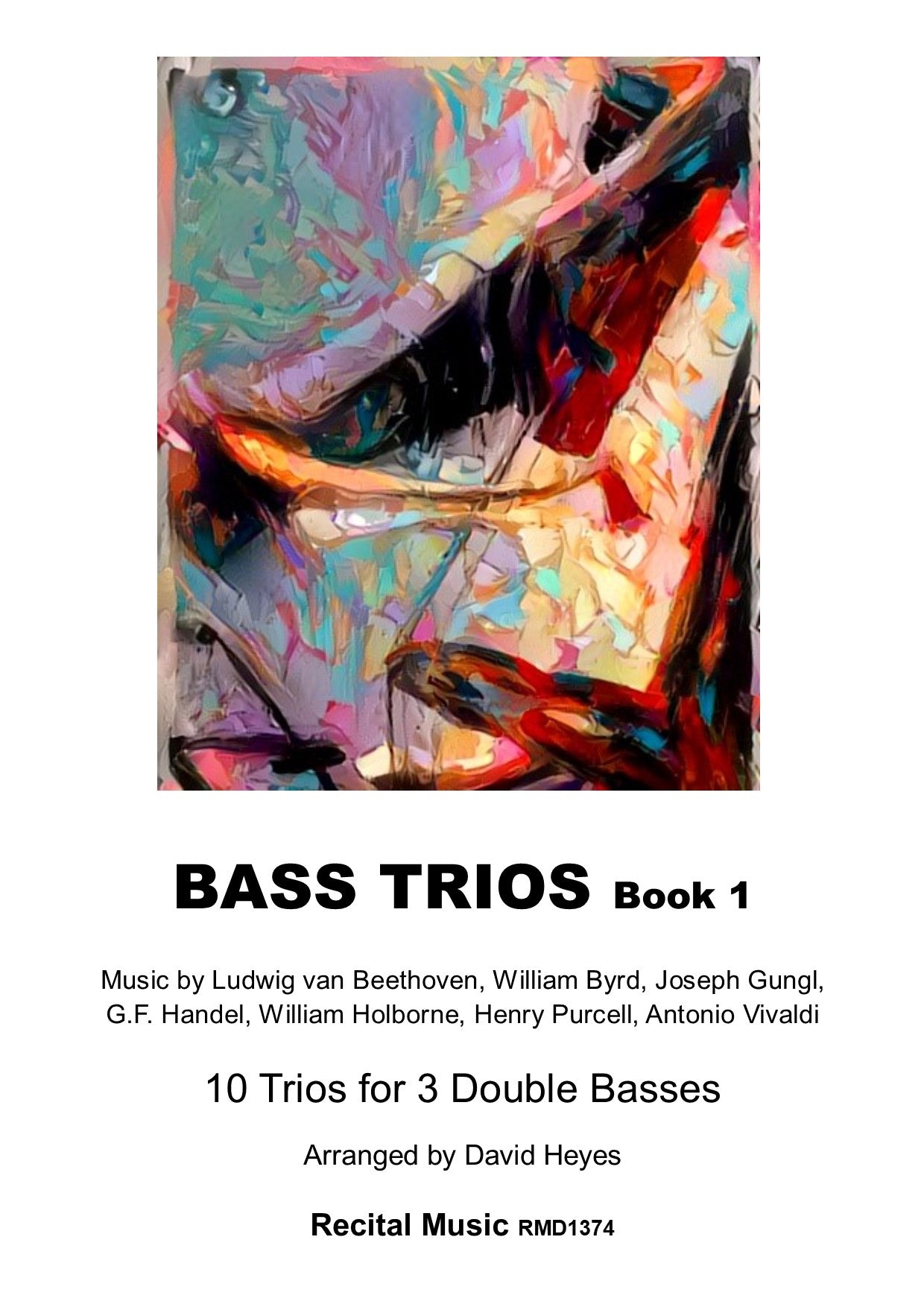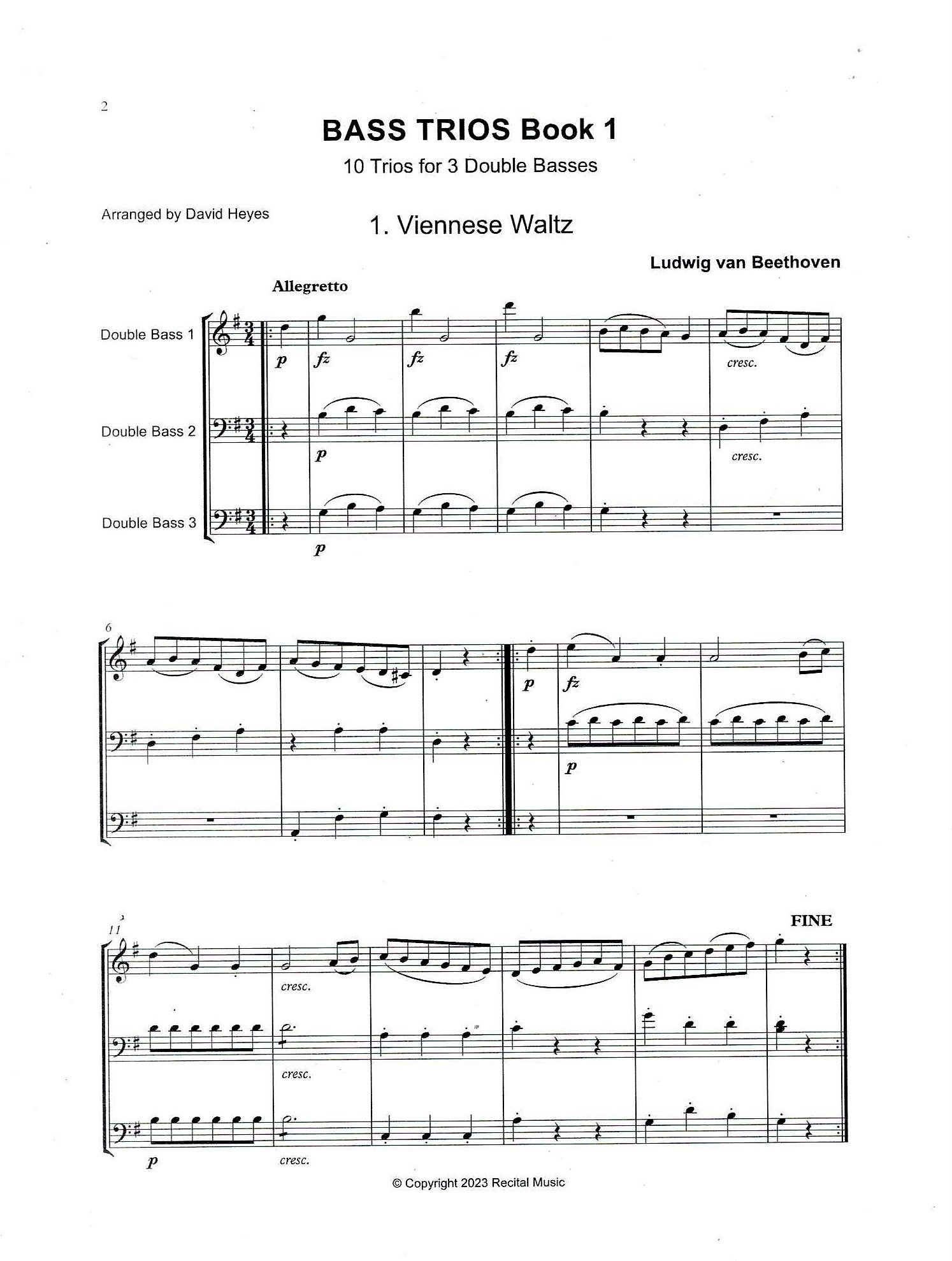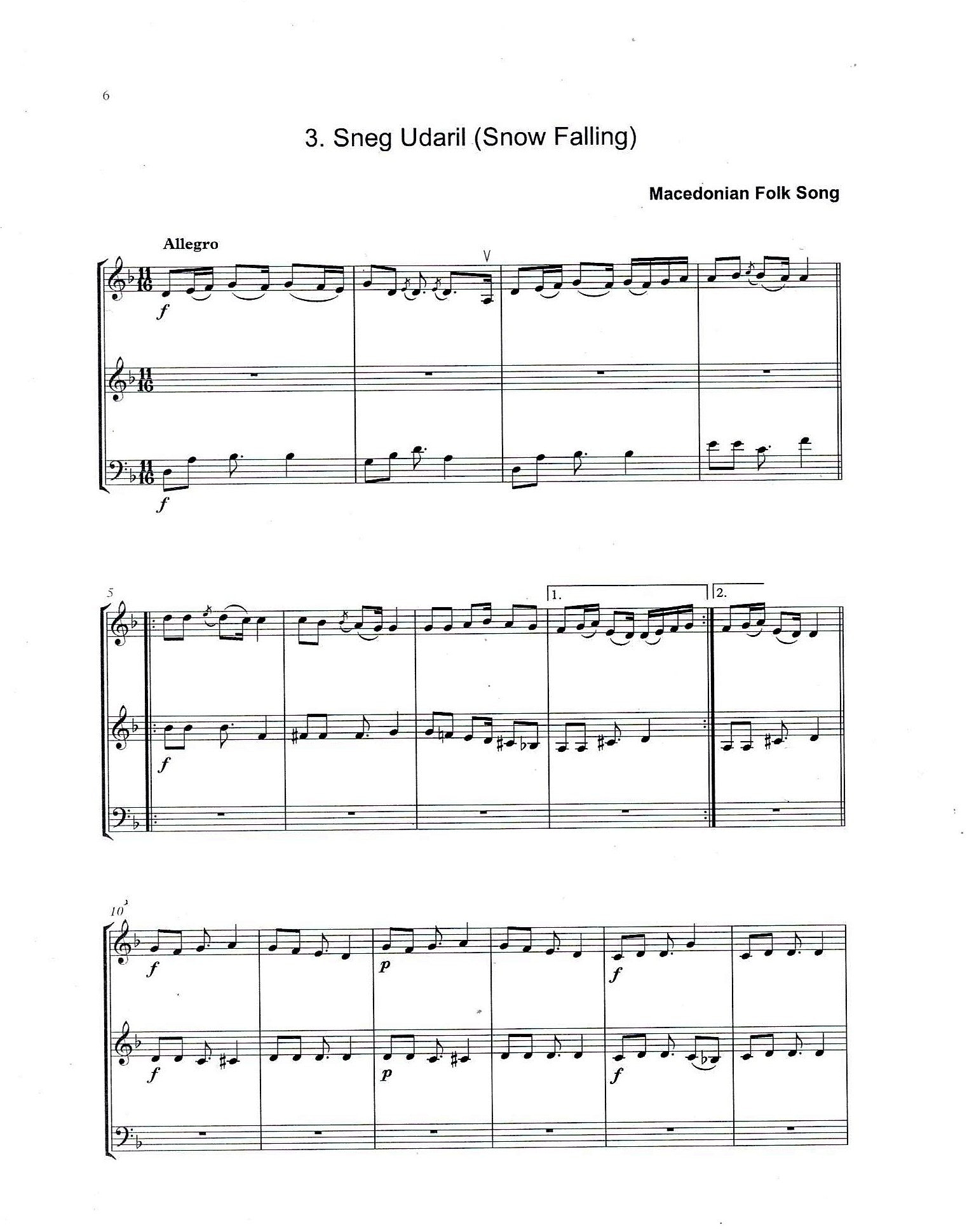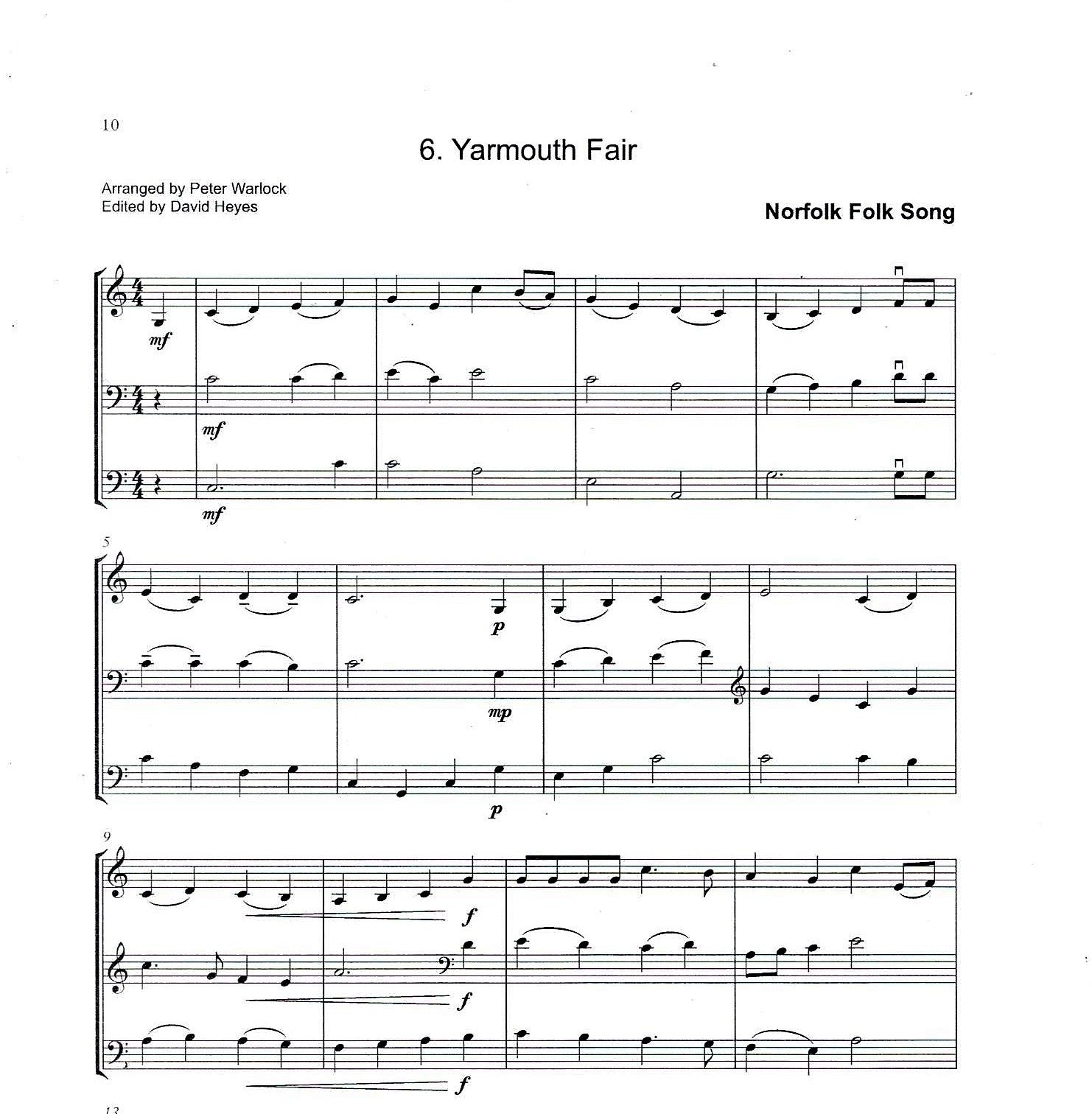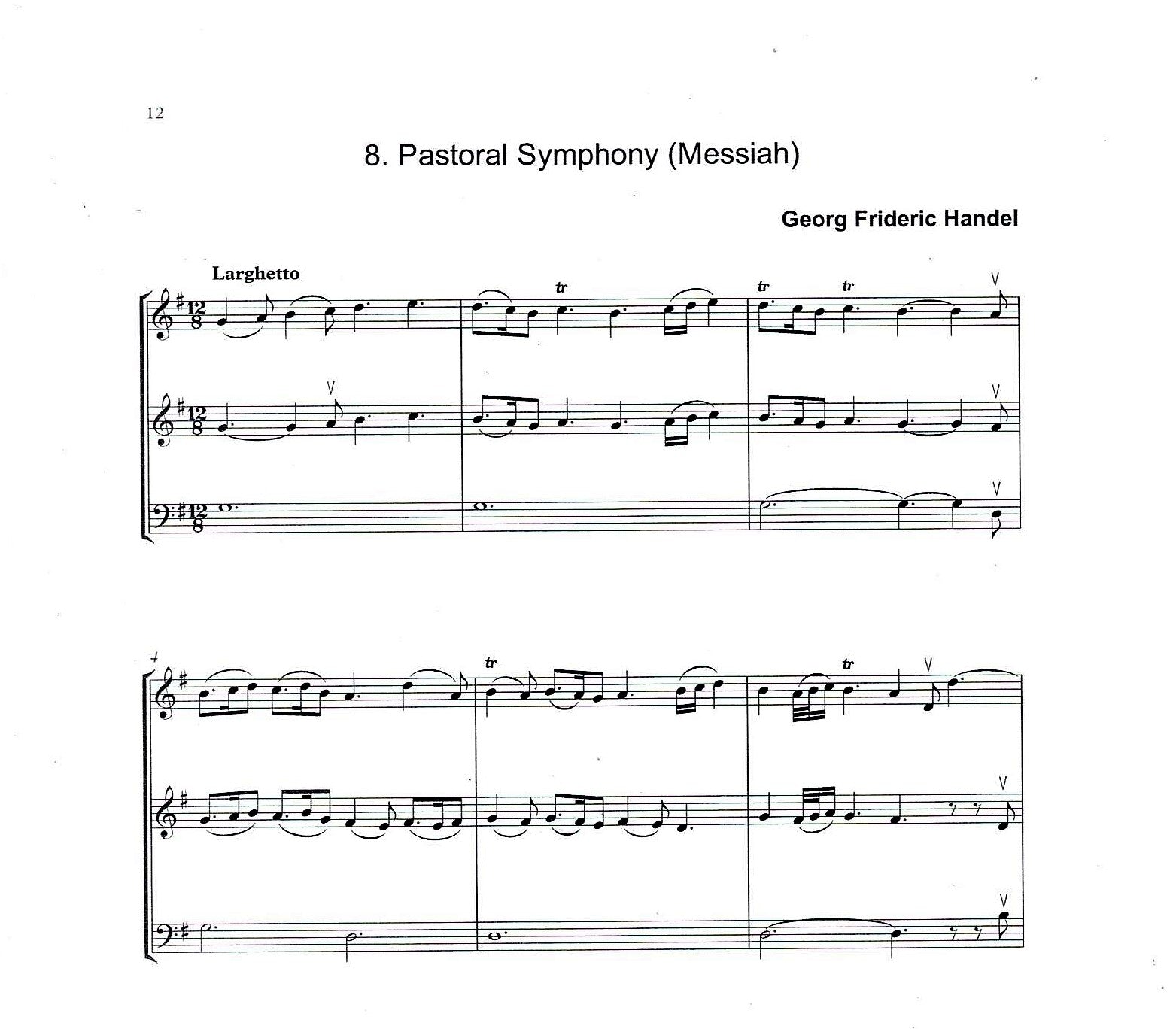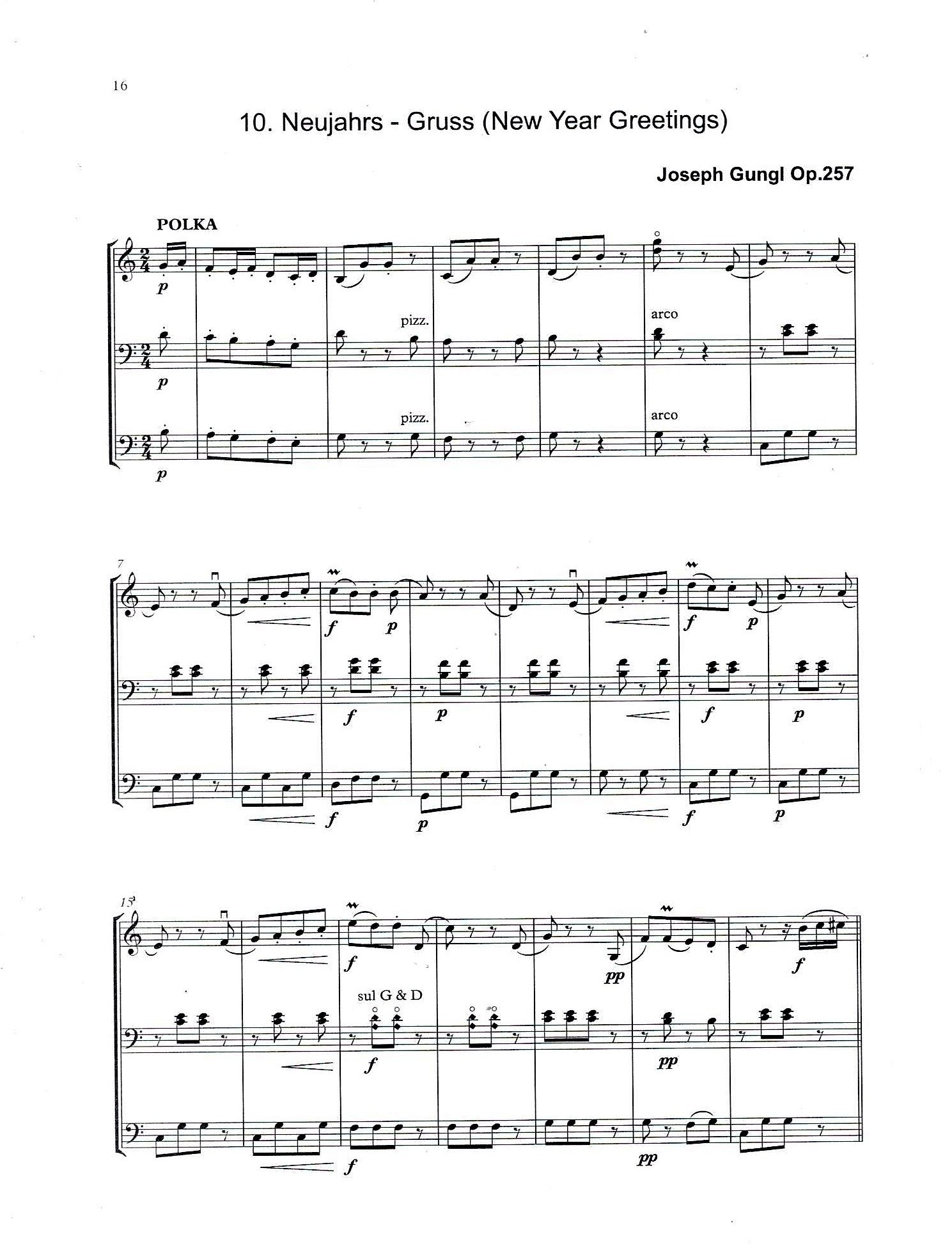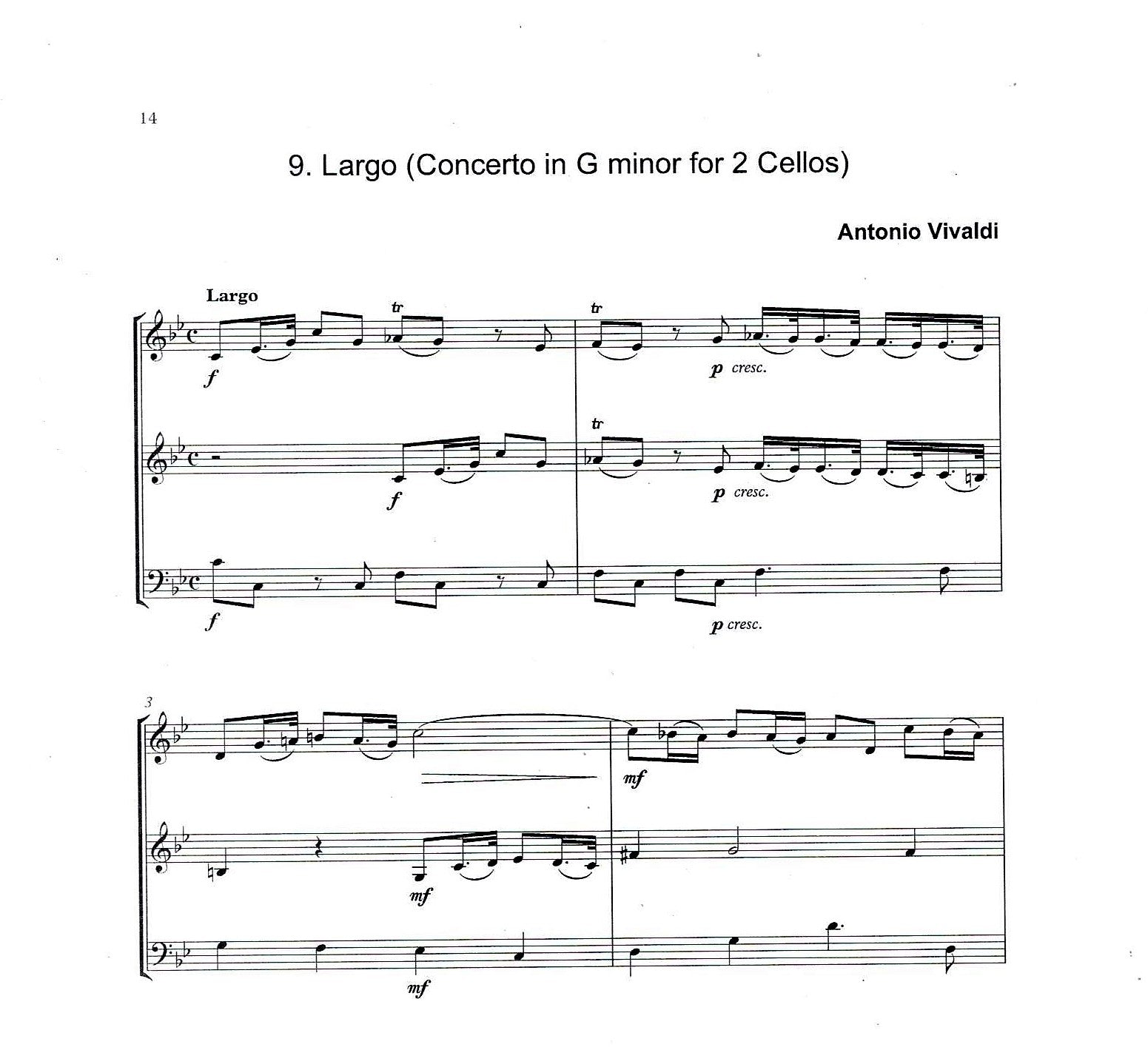David Heyes
Bass Trios Book 1: 10 Trios for 3 double basses (arr. by David Heyes)
Bass Trios Book 1: 10 Trios for 3 double basses (arr. by David Heyes)
Couldn't load pickup availability
About the Trios
Bass Trios Book 1 brings together exciting and accessible music from Tudor times to the 20th century, alongside folk song arrangements from Macedonia and Norfolk.
Ideal as concert repertoire, for ensemble practice, or just to play with friends, each trio offers musical and technical challenges in a range of styles and idioms, and all are player and audience friendly.
This edition includes a score and three solo parts.
Table of Contents
1. Ludwig van Beethoven (1770-1827) - Viennese Waltz
Beethoven composed a wealth of dance music during his early years in Vienna and this stylish and elegant waltz is a typical example of the early 19th-century dance music that was played throughout the city and beyond.
2. William Holborne - Gush Forth, My Tears
Very little is known about William Holborne except that he was the brother of Anthony Holborne (1545-1609), a composer and musician during the reign of Elizabeth I, and William composed a set of six vocal trios. Gush Forth, My Tears was composed in 1597 and is particularly evocative and atmospheric, with its slow moving harmonies and sustained melodies.
3. Macedonian Folk Song - Sneg Udaril (Snow Falling)
Originally for voices, Sneg Udaril is exciting to play and its 11/16-time signature, alongside driving rhythms and eastern influences, create a work which has always been an audience favourite. A drum accompaniment could be added to great effect.
4. Henry Purcell (1659-1695) - An Ape, a Lion, a Fox and an Ass
This catch (canon) for 3 voices was composed in 1686, using text by an anonymous author, and the words compare the different stages of the lives of people to the behaviour of certain animals. Each bassist plays the same music and a range of dynamics and articulations could be added to create further interest and contrast.
5. Ludwig van Beethoven (1770-1827) - Abbé Stadler
Maximilian Stadler (1748-1833) was an Austrian composer, musicologist and pianist. He was a friend of Mozart, Haydn, Beethoven and Schubert, and from 1803 he worked as a parish priest. Beethoven’s three-part vocal canon was composed in 1820, transcribes beautifully for double bass trio, and has a catchy tune and is possibly the most popular of Beethoven’s canons.
6. Norfolk Folk Song (arr. Peter Warlock) - Yarmouth Fair
The melody to Yarmouth Fair was composed by John Drinkwater (1882-1937), a Norfolk road-mender, and was notated in 1924 by E.J. Moeran on onew of his folk song expeditions to Norfolk. The accompaniment was composed by Peter Warlock (1894-1930) and the music can be repeated, with different dynamics, if needed.
7. William Byrd (c.1540-1623) - Benedictus
Benedictus is the fifth movement from Byrd’s Mass for three voices. Composed in 1591/92 and first published in 1593/94, this movement is beautifully still and atmospheric with suspended harmonies and the use of imitation adding to the drama and tension. It can be played with or without vibrato.
8. Georg Frideric Handel (1685-1759) - Pastoral Symphony (Messiah)
Handel’s Messiah was composed in 1741, in only 24 days, and is arguably his most popular oratorio. The Pastoral Symphony, played by strings alone, is from Part I of the work and has a gently lilting melody which introduces the shepherds ‘abiding in the field’.
9. Antonio Vivaldi (1678-1741) - Largo (Concerto in G minor for 2 Cellos)
Believed to have been composed in the 1720s, this is Vivaldi’s only concerto for 2 cellos. The outer movements abound with vitality and energy, contrasting a beautiful Adagio played by the two soloists and the continuo cellist, exploiting the wonderful bass sonorities of the three instruments.
10. Joseph Gungl (1809-1889) - Neujars - Gruss (New Year Greetings) Op.257
Joseph Gungl was a Hungarian composer, bandmaster and conductor. He was a prolific composer and wrote over 400 dances, including waltzes, mazurkas, quadrilles and polkas, and his music is characterised by long flowing melodies and rhythmic energy. New Year Greetings is a fast polka (Polka Schnell) abounding with bravura and restless energy and transcribes well for double bass trio.
